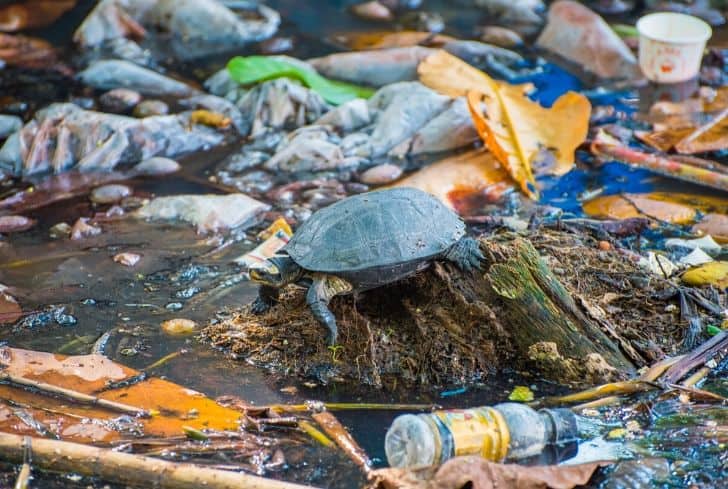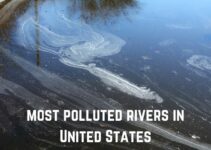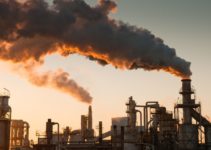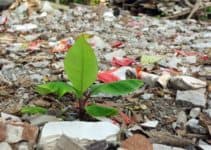Water pollution is one of the biggest threats to humanity and the ecosystem. The Earth is 71 percent water, and the oceans hold 96.5 percent of this water.
And with all this much, it’s easy to think we could never run out of this resource. But that’s not the case, especially considering the current rate of pollution.
Water pollution is a common issue that’s greatly impacting our quality of life and the safety of our planet. But what are some of the effects it has on our biodiversity?
Well, that’s what we’ll cover in this article, so read on!
How Does Water Pollution Impact Biodiversity?
Many of the products we enjoy are polluting water. Examples of these pollutants include thermal, radioactive, organic and inorganic contaminants, pathogens, and suspended solids.
These pollutants come from various sources, but the chemical industry is among the largest sources of water pollution, accounting for both organic and inorganic waste.
Now, even before we dive deep into that, let’s first clear the basics out of the way — what’s biodiversity?
In simple terms, biodiversity refers to all living things, including humans, in a particular habitat or the planet Earth. You can also think of it as the genetic diversity of species in an ecosystem.
Biodiversity is important because it can provide for basic human needs like fuel, shelter, food, and medicine.
Now, water pollution releases harmful substances into water bodies like rivers, lakes, and oceans. Anything that affects the typical functioning of the ecosystem is a pollutant.
Chemicals, trash, gases, microorganisms, sediments, petroleum, fertilizers, and even radioactive energy are some of the most common materials that pollute our water bodies.
Out-of-place pollutants alter aquatic environments, harming living creatures and biodiversity. The impact varies with the concentration and toxicity of the substances.
And although water pollution happens in our water bodies, the toxic substances will spread to other domestic and commercial areas, such as crops, animals, and even our drinking water.
Some other effects of water pollution include:
Disruption of Food Chains
Among the things that water pollution affects is the food chain. Small animals in the oceans and other water bodies eat almost anything. As such, they’re more likely to ingest toxic materials like lead, cadmium, and other pollutants in the water, mistaking them for food.
When that happens, the pollutants are passed higher in the food chain once these small animals are preyed on.
The poisonous substances will then be passed through different levels of the food chain until the effects spread to the animals sitting at the very top of the aquatic food chain.
Dead Zones
Did you know that even natural materials can become pollutants when they occur excessively in an area? For instance, a buildup of substances like nitrogen and phosphorus causes a dead zone.
These substances are often introduced through fertilizers in agriculture, making the environment unsafe and unsuitable for habitation. Ultimately, it drives aquatic life away and sometimes to their death.
How Does Water Pollution Affect the Environment?
Water is a vital resource for biodiversity and human survival. Virtually every living creature needs water to survive. But despite the central role it plays in our survival, pollution remains a significant threat to this crucial resource.
The effects of water pollution on the environment are significant, and they include:
1. It Affects Aquatic Flora and Fauna
Fish, mammals, turtles, and other flora and fauna life forms live in our water bodies and rely on their cleanliness for survival. The oxygen and other natural factors are so sensitive that introducing foreign materials can disturb environmental conditions.
Plastics, oil spills, fertilizers from agriculture, and paper are common materials in our water bodies.
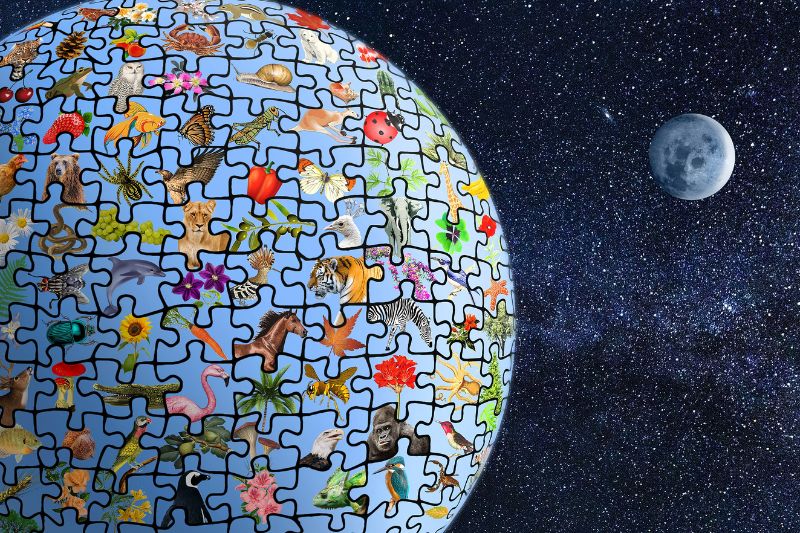
For instance, when there’s an oil spill, the substance will form a film on the water’s surface. This prevents sunshine needed for photosynthesis and cell metabolism from penetrating the water.
Even sad, most of these pollutants never get to be removed after they find their way into the water. Instead, they decompose with time, posing a potential threat to poor aquatic creatures.
2. Eutrophication
Although eutrophication is caused by air pollution, it affects our water bodies. This phenomenon is where nutrients are abundant, resulting in an overgrowth of algae and plant cover.
This reduces the amount of oxygen and sunlight that penetrate the water. If the aquatic life in the area isn’t comfortable there, they’ll have no choice but to migrate.
3. Toxic Algae Blooms
Excessive algae growth endangers humans and aquatic species. That’s because as it grows, it becomes more likely for toxic algae to form, putting the survival of marine life on the line.
Plus, excessive algae growth can displace fish, mammals, and other aquatic creatures in the area. Unfortunately, the reports about algae blooms are rising, leading to the worldwide shutdown of water supply systems.
4. Increased Waterborne Diseases
Another downside of water pollution is that it causes waterborne diseases. And it propagates the spread.
Toxic substances like lead and mercury are leading causes of death from water pollutants. These materials are often ingested by fish and other sea creatures we consume.
These substances give rise to conditions like cancer and hepatitis and increase the mercury content in our water bodies, making drinking water generally unsafe for human consumption.
5. Destruction of The Ecosystem
Water pollution seriously affects the ecosystem. For instance, the movement of nutrients downstream may increase the growth of algae and other aquatic organisms. This creates a struggle for resources between the algae and growing plants in most cases.
Plus, the growth of algae and other microorganisms alters the overall marine environment by reducing the amount of oxygen available and increasing the water temperature.
A recent report has revealed that coral reefs are depleting in numbers because of rising water temperatures, uncontrolled coastal development, climate change, overfishing, and of course, declining water quality.
6. Death of Animals
This is a no-brainer. When the water is unsuitable for life, whatever is left there will eventually die off.
Additionally, it is not uncommon for aquatic creatures like fish, crabs, turtles, and seagulls to mistake pollutants like plastic for food. When they eat either of these items, it can cause all sorts of trouble, including death.
7. Loss of Entire Species
Pollutants may also affect the breeding capacity of affected animals. This can cause a loss of entire species if care is not taken.
How Does Water Pollution Affect Air Quality?
Does water pollution affect air quality? Indeed, it does.
And this is through acid rain.
Acid rain is a phenomenon where toxic gases like sulfur and nitrogen mix with water in the atmosphere, creating a weak acid. This falls onto the soil and our water bodies as a pollutant.
Acid rain leaches aluminum from soil clay particles, releasing it into the ecosystem. The continuous rainfall exacerbates aluminum exposure to the environment.
Does Water Pollution Affect Animals?
Once again, water or any pollution affects all aspects of biodiversity, including animals.
Let’s talk about the effects on animals for a bit.
Drinking Water Contamination
Water contamination has widespread consequences, particularly for wild animals. Unaware of toxic substances, they are adversely impacted when consuming polluted water.
Water pollutants caused by fertilizers, human waste, industrial waste, mining activities, and hazardous waste from gas stations find their way into drinking water when pollution gets out of hand.
Disruption in The Food Chain
This is a common one. Under intense pollution, animals are likely to mistake pollutants for food, exposing them to all the dangers that come with the ingestion of toxic substances.
When that happens, the pollutants are again transferred to their immediate predators on the food chain. That could be fish, shellfish, and other eaters of the smaller aquatic animals.
The toxic substances are eventually passed to us after feeding any of the creatures containing the contaminants.
How Does Water Pollution Affect Birds?
You will be mistaken if you think water pollution cannot affect birds. Despite being airborne creatures, they are also susceptible to toxicity in polluted waters. For instance, it is estimated that between 100,000 to 1 million birds died in the 2010 Deepwater Horizon disaster.
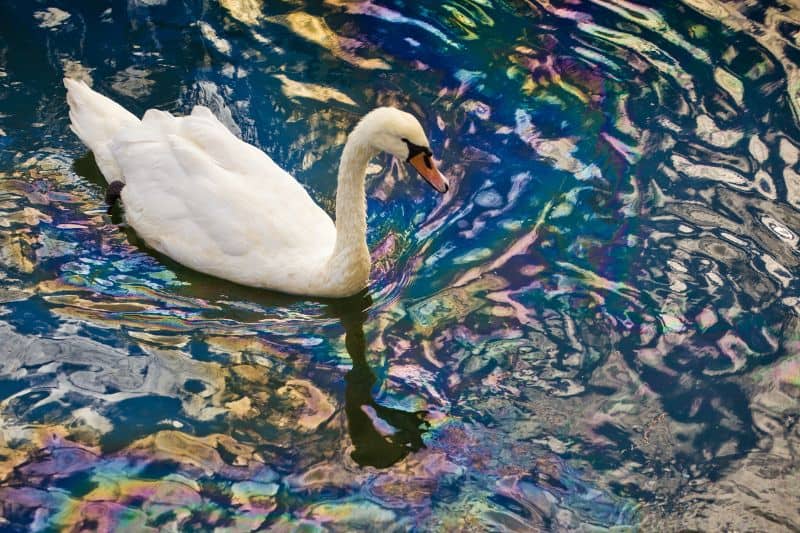
You see, birds usually love cleaning themselves by getting into the water. Now, when that happens in a puddle covered by oil, they can get trapped, becoming almost impossible to rescue themselves.
The more they remain trapped in the oil-coated water surface, they begin losing feathers, exposing themselves to more dangers.
But getting trapped isn’t the only danger birds encounter when in water. Pesticides and heavy metals are other sources of threat in the aquatic environment and can cause food poisoning and death in mammals.
Plus, water birds rely on fish for survival. As such, when these toxic substances have already driven the aquatic creatures out of their habitat or killed them, there’ll be nothing much left for the avian creatures to feed on. And the birds will either die or migrate, upsetting the balance of nature.
How Does Water Pollution Affect Aquatic Life?
Water pollution also affects aquatic life, whether in fresh or marine habitats. These creatures need three essentials for survival, and water pollution takes it away from them.
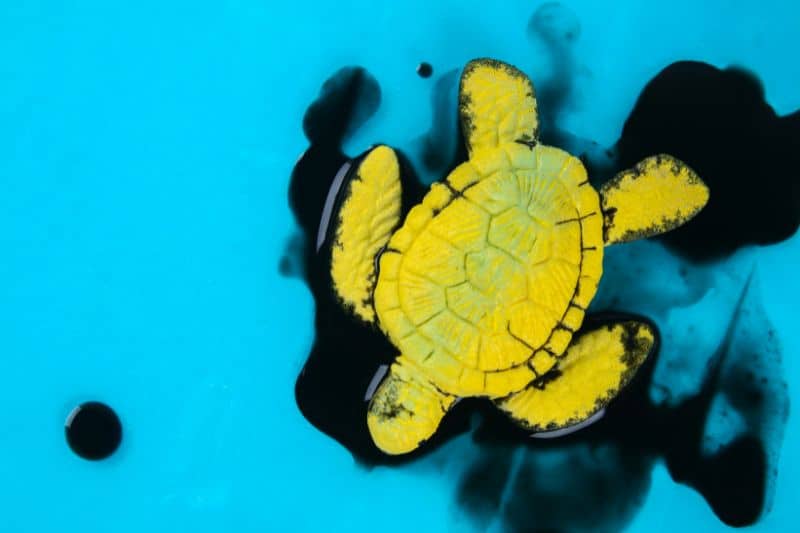
One notable way water pollution affects aquatic life is through the buildup of nutrients in an area. These nutrient-dense regions of the water encourage an overgrowth of algae blooms.
When these substances are too much in an area, they take over the resources. This means they get the most sunlight, oxygen, and other factors needed to grow.
It is still a problem because water can become dense easily when substances take up excess energy, such as when the dead algae bloom and decay, the rest of the aquatic life will be hard-pressed for resources.
This creates a dead zone that becomes unlivable for any aquatic life.
How Does Water Pollution Affect Crops?
Water pollution doesn’t just affect aquatic life and other animals. It can also affect crops, causing a significant impact on their health, and sometimes the impact can even be passed on to humans.
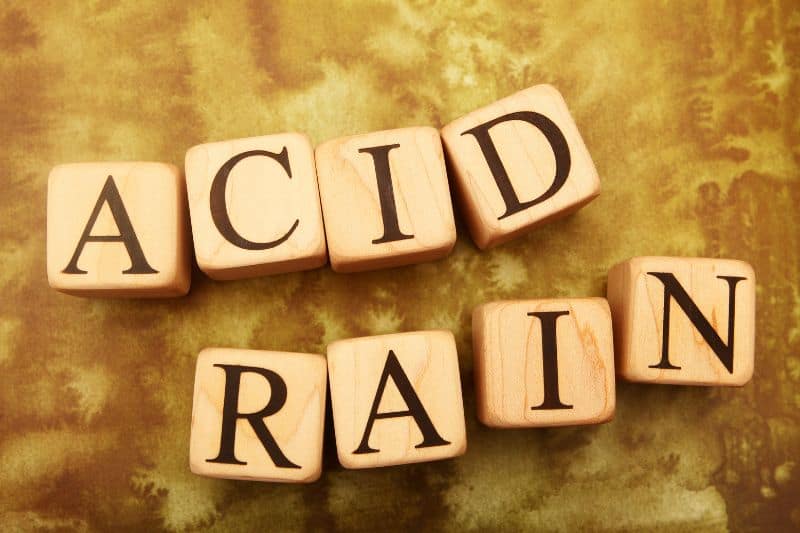
Bad water, such as acid rain, contains sulfuric and nitric acid. If they contact trees and leaves, they damage the fine hairs on them. This causes a lot of trouble for them, considering that these hairs aid the absorption of nutrients.
Plus, water pollution also affects photosynthesis. It reduces the capacity of water to dissolve gases like carbon dioxide, which are needed for synthesizing sunlight.
Water pollution will also make the soil acidic and unpalatable for many crops. It reduces the amount of calcium, iron, magnesium, and other vital soil resources needed for plant growth.
Conclusion
Pollution is an undesirable phenomenon that the world is currently suffering through. It leaves the ecosystem and biodiversity vulnerable.
We believe that sensitization about water pollution is the starting point to ending it. Spread the awareness any way you can; together, we can save our environment from doom.
